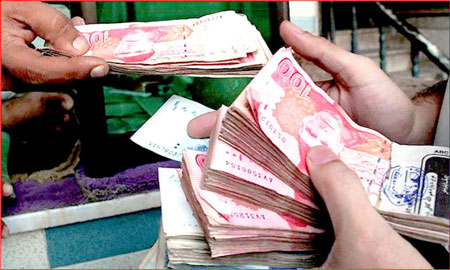The rupee is expected to remain stable against the US dollar in the coming week due to subdued demand for the local unit from importers, say traders.
They said that market players are also eyeing the central bank’s monetary policy meeting on Monday. The greenback traded at 213-214 during the outgoing week. It closed at 213.98 per dollar on Monday and finished at 214.65 on Friday. The rupee fell 0.31% against the greenback during the week.
“The market has stabilised over the last week, and the rupee will likely to remain stable at the same levels in days ahead,” said a foreign exchange trader.“Apart from forex inflows and outflows, the monetary policy decision will be instrumental to gauge the rupee’s future direction. The market is looking at Monday’s meeting,” the trader added.
The government lifted a ban on the import of non-essential and luxury goods to meet a condition of the International Monetary Fund (IMF) ahead of the board’s meeting later this month to revive the loan programme. However, it announced imposition of heavy duties on completely built units cars, mobile phones, and electronic appliances to discourage imports.
The market will also evaluate the impact of opening up of luxury imports on the rupee, according to traders.The foreign currency reserves have started to recover. The foreign reserves held by the State Bank of Pakistan slightly increased by $67 million or 0.9% to $7.9 billion as of August 12.
In a poll conducted by Tresmark Research, 69% of traders predicted no change in interest rates. The SBP hiked the policy rate by 125 basis points (bps) to 15% on July 7. Unchanged rates during the previous auction and that the central bank will not seek positive real interest rates are the main causes of the market sentiment of “No Change, according to the poll’s findings. “However, in our view, the most likely outcome is a 50bps rate increase,” Tresmark said in a note. The poll also suggested that the majority believe the sweet spot of USD-PKR to be between 205 and 215. While the rate would be good for the economy and for tempering inflation, it may be difficult to maintain the level on some factors.—INP










